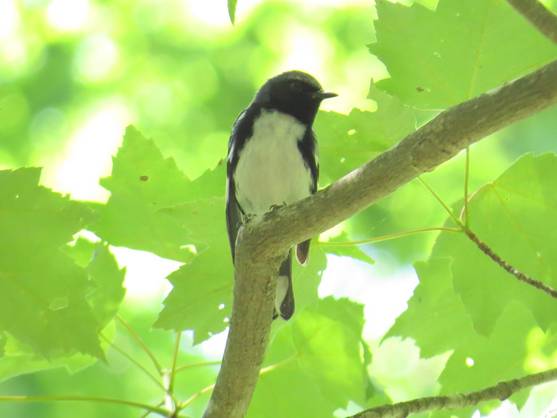
Did you know that you can enhance wildlife diversity on your own property through woodland management? Read on to learn how you and your forester can create greater biodiversity through silvicultural practices.
“Forest” is the largest land category in Connecticut, with approximately 60 percent of the state covered in forest. Since the statistic began being tracked in 1952, Connecticut’s net growth of trees has exceeded removals, and today the ratio of growth to removals is more than 2:1.
However, there is a noticeable lack of diversity in the age classes of Connecticut forests (and southern New England forests in general). Connecticut’s forests consist of 69 percent mature stands, 25 percent intermediate stands, and just 6 percent regenerating stands.
There is a critical loss of young forest habitat (also known as early successional habitat) in the state. When there are not enough young forest stands, then species that prefer low-lying vegetation are fewer in number. A diverse mix of forest age classes is beneficial because it provides the maximum range of wildlife habitat. Forest management is one way that landowners can influence the future composition of Connecticut’s forests.
Woodland Management Can Diversify Habitat
Forests change constantly, with or without human intervention, and over time a new tree species comes to dominate another through a cycle called succession. Some people oppose intervention because they fear it might harm wildlife, but in the long run, doing nothing can lead to conditions that are unfavorable for the very wildlife they want to help. Woodland owners have an important opportunity to influence the type and quality of wildlife habitat on their land through active forest management.
Openings within a forest create edge habitat. “Edge” is the term for where plant communities meet, or where successional stages or vegetative conditions within communities come together. This is often the richest area in a forest in terms of wildlife abundance and diversity. Having a variety of habitat cover types and timber age classes is beneficial for many species of wildlife, including birds, because of the abundance of edges they create.
Working with a licensed forester, landowners can plan for timber harvests that not only provide income, but also create the desired timber age classes and habitat conditions favored by wildlife species. If the landowner’s neighbors also own forestland and have similar goals, then the habitat management can be implemented on an even larger scale.
Check out this handy Foresters For the Birds guide produced by Vermont Audubon to see how you as a landowner can work with a forester to promote habitat for specific bird species in your woodland.
Habitat Case Study: The Myers Pond Forest
In 2014 scientists from Connecticut Audubon and the CT Agriculture Experiment Station conducted bird habitat assessments on over 25 woodland properties in Connecticut. One of the most intensively managed properties they visited was Hull Forestlands’ own Myers Pond Forest in Union, CT, which has been actively managed for timber production since 1900, with a recent focus on hemlock removals and white pine regeneration.
Patrick Comins, Director of Bird Conservation for CT Audubon, personally photographed a wide variety of birds and habitats on the land, including sedge/tussock meadow, open water, riparian, and upland bird habitats. Comins hailed the property as “One of the crown jewels of forestland in Connecticut.”
Jeffrey Ward, Chief Scientist at the Dept. of Forestry and Horticulture at the Connecticut Agriculture Experiment station, said the Myers Pond Forest was the “best managed property he had seen” in their bird habitat assessments. In addition to a wide variety of birds, the Myers Pond Forest is home to many of the common woodland mammals of eastern North American, including white tailed deer, black bear, wild turkey, coyote, bobcat, and beaver.
The Myers Pond Forest is an excellent example of how intensively managed forests provide a wealth of wildlife habitat while at the same time producing timber to meet the needs of society. For more information on Hull Forestlands’ Myers Pond Forest, you can access the forest history here: Myers-Pond-Forest-History-2020
Learn more about woodland management for your property. Check out our youtube channel for videos on our award-winning forestry and timber harvesting services, as well as our lumber and wood products manufacturing (utilizing sustainably harvested local timber). See where harvested wood goes and how it is utilized in a zero-waste operation to make products that store carbon throughout their service lives as well as by-products that reduce reliance on fossil fuels.
Read reviews from clients who have used our forest management, logging, and timber harvesting services.
Contact the Hull Forest Products forestry department today for a free no-obligation consultation. (860) 974-0127 extension 4.







